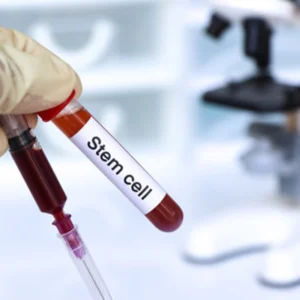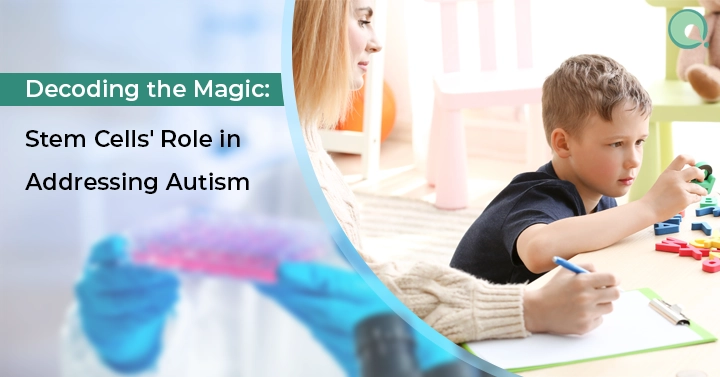Autism, also called Autism Spectrum Disorder, is a challenging journey for children and their families. There are traditional therapies like speech and occupational therapies that provide support and hope to these families. These therapies do help you manage the condition, but they do not try to resolve the underlying issue. Now, all hope is not lost. Enter stem cell therapy! Stem cell treatment is a revolutionary approach that taps into the body’s repair system.
But have you ever been curious about how these tiny cells work their magic in the fight against autism?
This blog delves into the science behind stem cell therapy for autism. We will uncover the potential benefits these stem cells bring to individuals diagnosed with autism. Join us as we navigate the fascinating world of stem cells to discover the potential they hold for improving the lives of individuals with autism.
How Exactly Do Stem Cells Work Their Magic In Autism Treatment?
Stem cells have been shown to differentiate into several other types of cells required by the body. It has been proven in numerous studies that stem cells can even differentiate into neurons. Other than replacing damaged neurons, these cells also help in the formation of new connections. These newly formed cells have an improved ability to develop synaptic connections in the brain regions where they are lacking. 
It is not only that these cells help restore the neural network and damaged neurons. These cells also help in:
- Reducing the inflammation
- Building immunity
- Better metabolism
- Modulate the hyperactive immune response.
Stem cell therapy has been shown to boost the immune system and eliminate inflammation from a patient’s body or organs, even from the brain. When autism is diagnosed, several areas of the brain that control attention, memory, speech, and concentration are damaged. After stem cell therapy, oxygen and blood flow to the brain, known as perfusion, improve, resulting in the formation of new arteries while also replacing damaged neurons.
Contact Us For Free Online Consultation
With time, stem cells multiply and differentiate into new cells, resulting in gray and white matter restoration, reducing neurological symptoms, and improving autism symptoms.
Source Of Stem Cells
Stem cells can be classified into three types─: embryonic stem cells, mesenchymal stem cells, and induced pluripotent stem cells. Initially, all three types of stem cells were chosen to be used in the treatment. But, due to ethical concerns surrounding embryonic stem cells and induced pluripotent stem cells, they are not used in therapeutic applications. Interestingly, mesenchymal stem cells do not face overwhelming ethical scrutiny, and hence, they are being used in stem cell treatment.
Mesenchymal stem cells are adult stem cells found in various tissues, like bone marrow, adipose tissue, and umbilical cord blood. It has been reported that stem cells derived from umbilical cord blood are capable of differentiating into different cell types. Due to their ability to differentiate into multiple lineages and their safety, these cells are the primary choice for autism treatment.
Are Stem Cells Safe?
 Stem cells offer a safe alternative treatment solution for the treatment of autism. Being the natural repair cells of the body, these cells can be very potent in helping a child accelerate their developmental progress. These repair cells are provided to the individuals through an intravenous injection. The donor stem cells then start to circulate in the blood. These cells then cross the blood-brain barrier to replace the old and damaged cells and help the brain build new connections.
Stem cells offer a safe alternative treatment solution for the treatment of autism. Being the natural repair cells of the body, these cells can be very potent in helping a child accelerate their developmental progress. These repair cells are provided to the individuals through an intravenous injection. The donor stem cells then start to circulate in the blood. These cells then cross the blood-brain barrier to replace the old and damaged cells and help the brain build new connections.
Autism Free E-book Download
What Improvements Can One See After Stem Cell Therapy For Autism?
After a stem cell transplant, parents start to see improvements in their child’s behavior around three months after the transplantation. The primary reason it takes such a long time to observe changes is because it takes some time to develop the neurons. So, what kind of organisms can one observe after stem cell transplantation? You can expect to see the following improvements:
- Improved everyday self-care skills
- Improvements in writing and reading skills.
- Longer span of concentrated effort
- Reduced sensitivity to lights and loud noises.
- Gradual improvements in recognizing items and their associated names
- Improved communication skills
- Maintaining strong eye contact
- Better tolerance for changes in food
- Improved digestion
Following a stem cell transplant, parents often witness remarkable changes in their child’s behavior within three months. From improved self-care skills to sharper communication and a better tolerance for sensory stimuli, the improvements are astounding. There are several individual cases that show how stem cells can positively transform a child’s life post-stem cell therapy. You can read about a few cases in the blog titled “3 Astonishing Stories Of Stem Cell Therapy For Autism In India.”
Success Rate of Autism Stem Cell Treatment in India
 The success rate of stem cell treatment ranges from 60% to 80%. Almost every case shows that there are tremendous improvements in the child’s post-stem cell therapy. Stem cell therapy in children has significantly improved when combined with conventional therapies. That is the reason why doctors recommend continuing with the traditional therapies while stem cells restore the damaged cells.
The success rate of stem cell treatment ranges from 60% to 80%. Almost every case shows that there are tremendous improvements in the child’s post-stem cell therapy. Stem cell therapy in children has significantly improved when combined with conventional therapies. That is the reason why doctors recommend continuing with the traditional therapies while stem cells restore the damaged cells.
Autism Patient Success Stories
Conclusion
Going through the challenges of Autism Spectrum Disorder can be hard for kids and their families, but they do not have to go through it alone. Traditional treatments can help and give hope, but they do not always get to the root of the problems. Now there is stem cell treatment, a new way of treating autism that uses the body’s natural repair system to help people. Stem cells can change into neurons and make new connections. They can also reduce inflammation and boost the immune system. This means that stem cells can be used to address the complexities of autism.
FAQ
Q: Can Stem cells help to manage Autism?
Yes! Stem cell therapy for autism is very effective in improving the everyday life of the child. It has helped a few families to see their child’s health and behavior improve over time.
Q: Where can I get stem cell treatment for Autism?
To receive the best stem cell therapy for autism in India, you can turn to clinics that have partnered with Advancells. You will be able to get the highest quality umbilical cord-derived stem cells for your child that can yield promising results.
Q: How long does it take to see results from stem cell therapy for autism?
The period of time it takes to see the effects of stem cell therapy for autism depends on the individual and the severity of the condition. It could take a few weeks to a few months for some people to notice big changes after treatment.
Q: Are there any alternative treatments for autism that I should consider?
Stem cell therapy is showing promise as a potential treatment for autism. When stem cell therapy is combined with traditional treatment options like speech and occupational therapies, the results for the child increase tremendously. It is important to discuss the treatment plan transparently with your healthcare provider to determine which treatment may be most effective for your loved one.
Latest Blog:
5 Reasons Mesenchymal Stem Cell Therapy Could Be The Game Changer For Parkinson’s
Does Regenerative Therapy for Erectile Dysfunction Work


Recent Comments